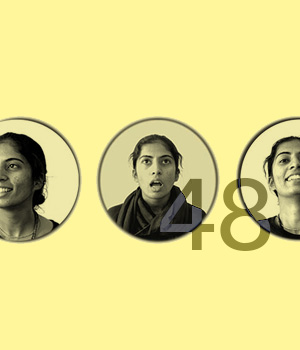Emotions: Neuroscience Meets Hindu Philosophy
Emotions are an important part of human existence. We can feel a diversity of emotions, including both positive ones, such as happiness and pleasure, and negative ones, like fear and sadness. The environment we inhabit also plays a significant role in the way how emotions emerge.
Environments and the emotions, they elicit stimulate certain mental and bodily responses, which result in corresponding actions. Though we each have a certain biological disposition, we are also governed by surroundings that shape thoughts, emotions, and actions as well as further shaping individual personality and behavior.
This project inquires into the nature and the significance of the emotional Self from two different points of view: from the 'Bhagavad Gita', one of the fundamental text within the famous ancient Hindu epic 'Mahabharata'; and from the modern neuroscientific understanding. Despite the fact that they represent different approaches to 'emotions', both sources acknowledge that we are constantly impelled by forces within our surroundings. The thoughts and emotions triggered by our environment can eventually become an integral part of us and our Self.
Megha Katyal's artistic work interrogates the identity of the Self as a personal tightrope walk of our emotions. Are they only a mirror of external forces, or are they mastered by the individual subject? Based on a neuroscientific knowledge of human emotions, as reflected, for example, in the work of Prof. Dr. Sascha Frühholz, Katyal's artwork represents central emotions as a metaphorical web woven through the interaction of external forces – thus questioning the existence of a true Self.
We are grateful to the spiritual mentor Hita Ambrish for His blessings and invaluable support. Our sincere thanks go to ProHelvetia - Swiss Arts Council, the Swiss Center for Affective Science, Foundation Butticaz, the Cognitive and Affective Neuroscience Lab, the Institute of Psychology, and the University of Zurich.
The Bhagavad Gita (The Song of God) is a divine discourse written down in Sanskrit between the fifth and the second century BC. On the battlefield of Kurukshetra, Lord Krishna dialogues with his disciple Arjuna. Upon seeing his kinsmen prepared to fight, the warrior Arjuna is distressed by the idea of killing men who he admires. Arjuna experiences emotional turmoil. Completely deluded, he expresses his sorrow to Lord Krishna, who transformed the directionless Arjuna with His divine lecture, known as Srimad Bhagavad Gita.
Text Translation from Sanskrit to English: Dr. Manohar Abhay
Megha Katyal is an artist working with the different surroundings she lives in and grew up in. Many of her works focus on weaving, a practice she knows from her home country of India. In her work, it functions as a representation of the interconnections between life, people, places, and cultures. More
Prof. Dr. Sascha Frühholz is Professor for Cognitive and Affective Neurosciences at the Institute of Psychology at the University of Zurich. More
Related contributions
